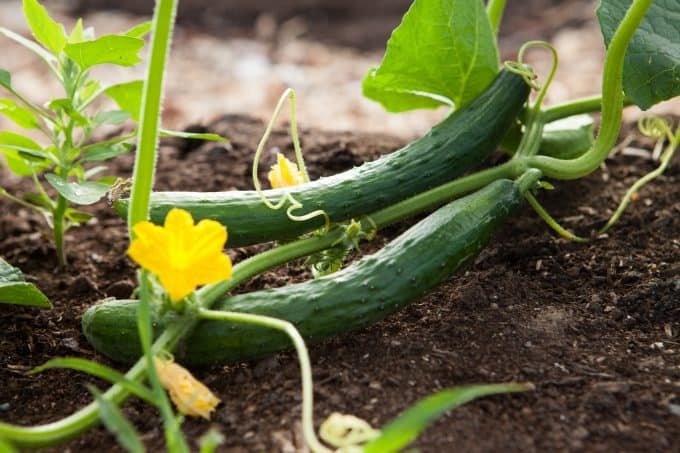Last Updated on July 3, 2021 by Dr Sharon Baisil MD
Cucumber is a nonstarchy vegetable and thus, the consumption of it in any quantity does not spike up the blood sugar level in the body. This makes cucumber an ideal food for individuals with type 1 and type 2 diabetes.
9 Health Benefits of Cucumber in Diabetes
1. Boosts Immunity
Cucumber Seeds are known to be rich in a wide range of phytonutrients, that includes both carotenoids and flavonoids. They protect the body from diseases and enhances the immune system.
2. Prevents heart disease and Stroke
Flavonoids present in the cucumber can reduce many of the risk factors associated with diabetes such as heart diseases, myocardial infarction, stroke, etc. Accelerated atherosclerosis is the main culprit behind the development of cardiovascular complications in individuals with long-standing diabetes. The regular intake of cucumber can directly inhibit the process of atherosclerosis, thereby protecting the individual from developing these non-communicable diseases.
3. Slows down the aging of the body
Cucumbers also help to reduce the problems related to the regulation of high blood sugar levels. Prolonged high blood sugar levels in the body can lead to excessive production of reactive oxygen species(ROS) and reactive carbonyl species(RCS).
An increase in the production of reactive oxygen species can damage the DNA (deoxyribonucleic acid ) and RNA( ribonucleic acid) or result in cell death. An increase in the production of reactive carbonyl species results in pathological disorder or accelerates aging.
Consumption of cucumber controls the overproduction of both ROS and RCS.
4. Improves hydration and prevents kidney diseases
Cucumber is rich in water content and contains nearly 95% of water. Staying hydrated is one of the most important steps in diabetes to prevent accumulation of glucose in the body .i.e. water drains out the excess blood sugar from the body, high level of blood sugar can increase the risk of dehydration to a diabetic patient.
Prolonged Dehydration in a diabetic patient can lead to kidney damage or can cause nerve damage. Also, hydration can result in weight loss, which in turn again reduces the chance of acquiring diabetes due to obesity
5. Rich source of Potassium
Cucumber is nutritionally beneficial as it contains nutrients like potassium and magnesium that keep the body hydrated. For a diabetic, too much starch intake can spike up the blood sugar level instantly therefore opting for food with no starch or less starch content is advisable
6. Helps in reducing insulin resistance
Cucumber is a low glycemic vegetable with very low calories per 100 gms. Thus it helps in attaining satiety easily and prevents the consumption of excess foods. This in turn leads to weight loss and reducing insulin resistance.
7. Does not spike blood glucose levels
The glycaemic index of cucumber is 15, therefore intake of cucumber is beneficial to a diabetic patient as it does not spike up the blood sugar level. Cucumber is low in carb content, one glass of freshly chopped cucumber contains nearly 4g of carbohydrate therefore, consumption of cucumber is highly advisable.
8. Packed with fiber
Cucumber contains a good amount of fiber nearly 2 to 3%. Soluble fiber slows down the absorption of blood sugar thus, improvises the blood sugar levels, while The insoluble fiber reduces the risk of developing type2 diabetes, which can be a boon for people with Prediabetes.
Cucumber peels are rich in dietary fibers, which again, reduces the blood sugar levels in the body.
As far as the cucumber is organic .i.e. free of pesticides. It is highly advisable to consume unpeeled cucumbers. Peeling a cucumber peels of its nutritional value as well.
9. Regulation of blood glucose
Intake of cucumber on daily basis improvises the regulation of blood glucose and also reduces the risks related to diabetes. The nutritional value of cucumber is beneficial and is recommended to all types of diabetic patients.
References
- https://www.ncbi.nlm.nih.gov/pmc/articles/PMC4916550/
- https://www.sciencedirect.com/science/article/abs/pii/S0261561413000897
- https://link.springer.com/article/10.1186/s12986-015-0057-7



